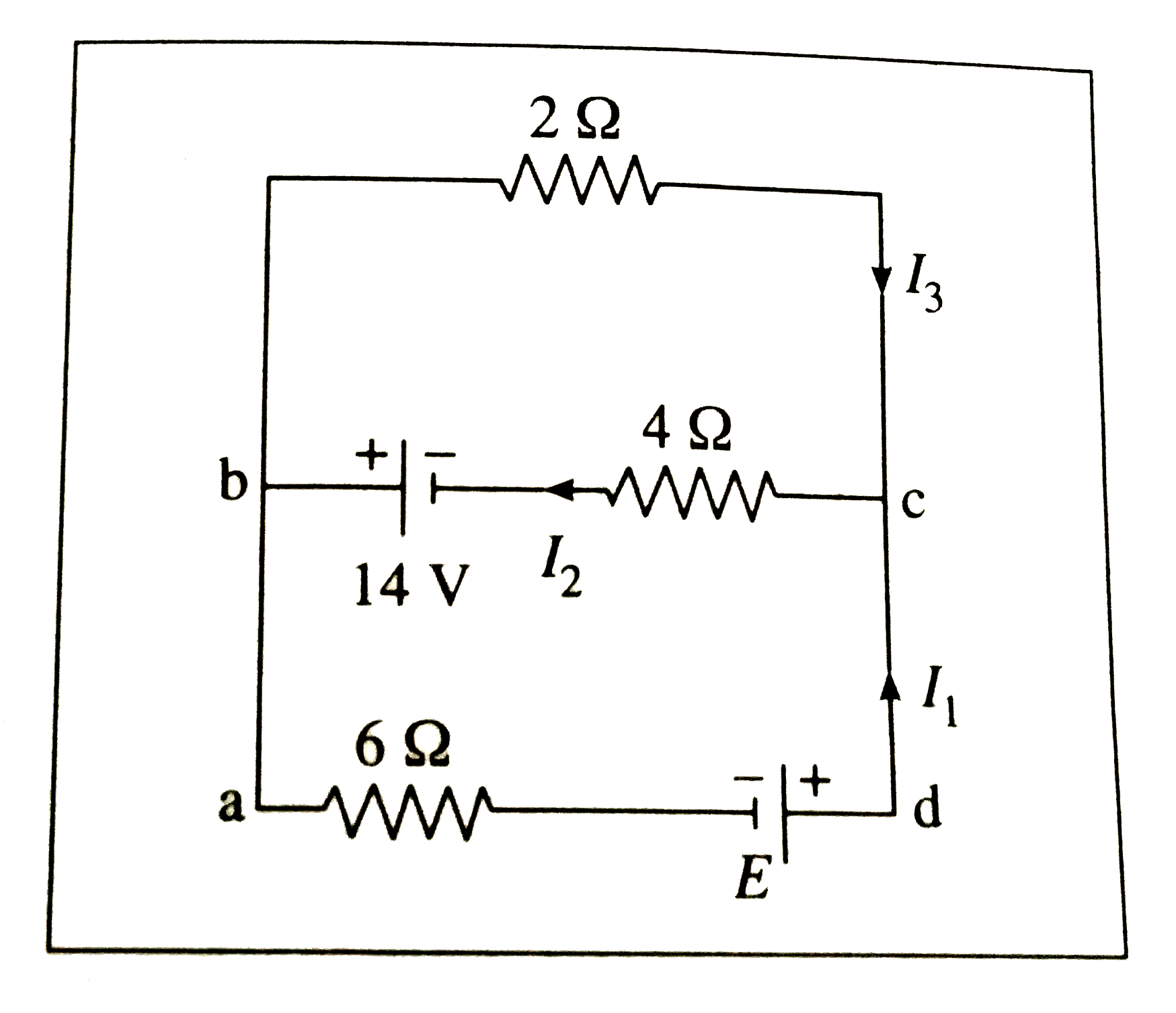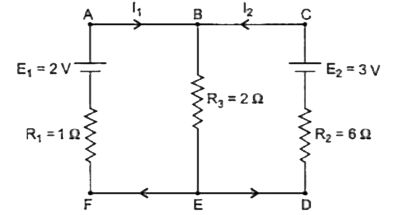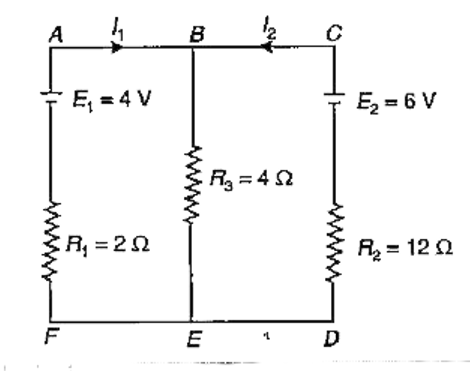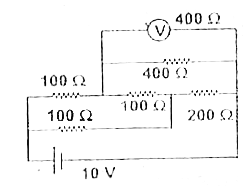Calculate in the given circuit applying Kirchhoff.s laws.

Applying Kirchhoff.s law, in closed loop ABCFA

Similarly, applying Kirchhoff.s law in closed loop AEDFA
or
or
or
Now, adding the Eqs. (i) (ii), we get
Similar Questions
In the given circuit, apply Kirchhoff's voltage law to loop abcda, and write the corresponding equation.
 View Solution
View SolutionIn the circuit shown in figure below, E1 and E2 are two cells having emfs 2 V and 3 V respectively, and negligible internal resistances. Applying Kirchhoff.s laws of electrical networks, find the values of currents I1 and I2.
 View Solution
View Solution
Knowledge Check
- Question 1 - Select One
A : Kirchhoff's Current law is applicable at any junction isor node in the circuit.
R : Kirchhoff's laws are general in nature .AIf both Assertion & Reason are true and the reason is the correct explanation of the assertion , then markBIf both Assertion & Reason are true but the reason is not the correct explanation of the assertion then mark.CIf Assertion is ture statement but Reason is false , then markDIf both Assertion and Reason are false statements then mark.
In the circuit shown in figure below, E1 and E2 are two cells having emf 2 V and 3 V respectively and negligible internal resistances. Applying Kirchhoff.s laws of electrical networks, find the values of currents I1 and I2.
View SolutionThere is no resistance in the inductive circuit Kirchhoff 's voltage law for the circuit is
 View Solution
View SolutionThere is no resistance in the inductive circuit Kirchhoff 's voltage law for the circuit is
 View Solution
View SolutionIn the circuit given, E1andE2 are two cells emfs 4 V and 6 V respectively, having negligible internal resistance. Applying Kirchhoff.s law of electrical networks, find the values of I1andI2.
 View Solution
View SolutionDiscussion and KirchhOFf’s Law
View SolutionA : Kirchhoff's Current law is applicable at any junction isor node in the circuit.
R : Kirchhoff's laws are general in nature .View SolutionCalculate the potential difference across the resistor of 400Ω as measured by the voltmeter Vof400Ω either by applying Kirchhoff's laws or otherwise
 View Solution
View Solution

